Kraft Paper: The Sustainable Choice for Food Packaging
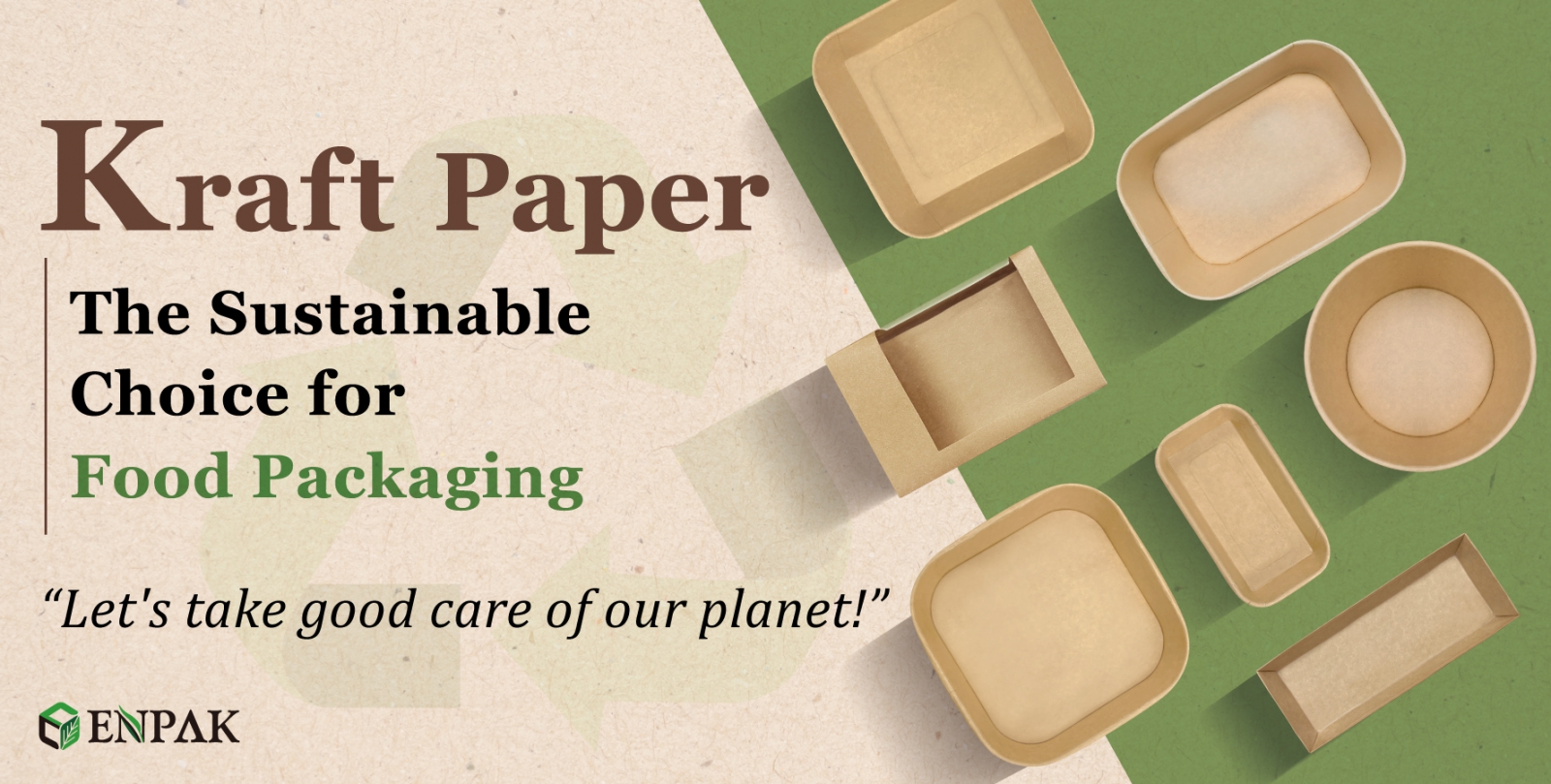
If you are a food business owner, then you know how important it is to keep the taste and freshness of the food items intact. However, have you considered that customers also pay attention to the packaging that encases their meal? In the Food and Beverage (F&B) business, food presentation and how food is served are essential. The right choice of food packaging and takeaway containers can create a memorable dining experience.
Today’s consumers have become more conscious than ever of their environmental impact. So, they prefer to purchase products packaged in eco-friendly packaging that poses no harm to the environment. This shift in consumer behavior has propelled kraft paper to the forefront as a compelling solution to meet these evolving demands. Nowadays, the widespread use of kraft paper in various packaging forms, from takeout containers to cups, demonstrates its broad appeal, particularly in the F&B industry. Let’s dive into this blog to explore the convincing reasons for using kraft paper boxes for your food products!
Table of contents
- What is kraft paper?
- How is kraft paper produced?
- Regular paper container vs kraft paper container
- Key Benefits of Kraft Paper in Food Packaging
- How is Kraft Paper Used in Packaging?
- Final thoughts
What is kraft paper?
Kraft paper is a naturally biodegradable material, used in a wide range of industrial and commercial operations for packaging and protection. The term "kraft paper" originates from the German word for "strength," reflecting its development by a German inventor in 1880 through the kraft pulping process. This method produces a remarkably durable and tear-resistant material, living up to its powerful name. Not only is the material strong, but it is also highly versatile.Kraft paper allows for various shades and colors, and its porous and textured surface enables high-quality finishing and printing for a more premium rustic appearance. It is ideal for creating durable wrapping paper and sturdy cartons and rigid boxes. Kraft paper board is available in a range of colors and shades. This versatility makes it an excellent choice for branded packaging solutions.
How is kraft paper produced?
In the late 19th century, Carl F. Dahl, an engineer at a paper mill, sought to improve paper product strength. He experimented with altering the chemical process used in paper production. The standard method involved grinding wood chips and mixing them with adhesive. Dahl discovered that treating the pulped wood with sulfates significantly enhanced the final product's durability. The material's robustness and versatility quickly made it a favorite in the packaging industry. It also found a niche in the food sector, particularly after being wax-coated, which made it ideal for wrapping meat. This application earned it the nickname 'butcher paper', offering an economical and effective packaging solution.Regular paper container vs kraft paper container
Some people may say, “It’s just paper, what makes it so special?Due to the added sulfate, kraft paper is much stronger than the typical paper, as stated in the previous section, and the material becomes more durable and tear-resistant as compared to regular paper. In addition, the surface of kraft paper is more porous too, which makes it a little ineffective for conventional printing but highly ideal for special finishes, such as foil stamping and debossing or embossing.
Key Benefits of Kraft Paper in Food Packaging
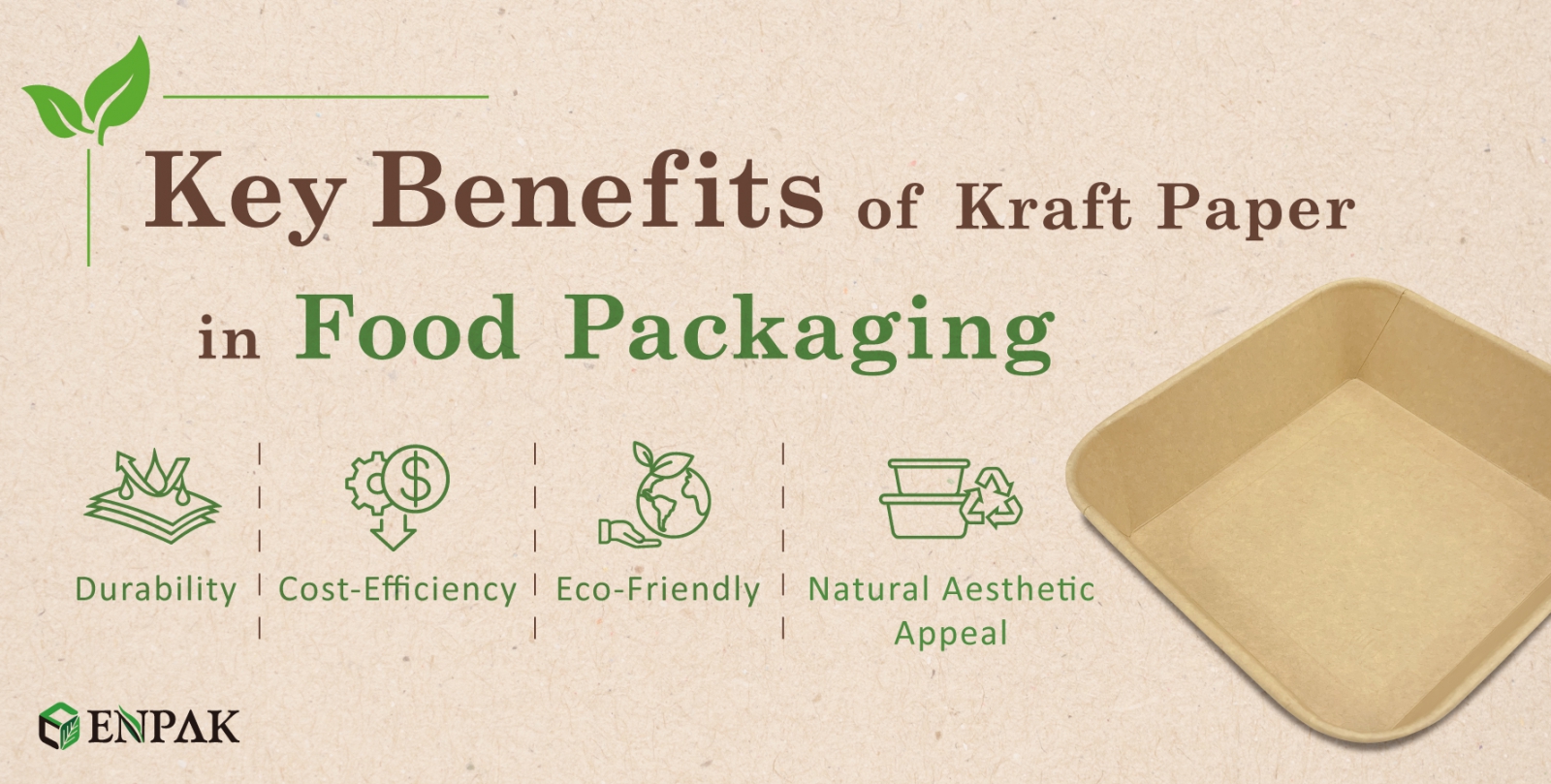
Kraft paper is increasingly becoming a popular choice for food packaging, and for good reason. Its unique combination of durability and cost-efficiency makes it an ideal material for businesses looking to balance quality with affordability. Here's a deeper dive into why kraft paper stands out in these aspects.
Durability
- Strength and Better Grease-Resistance: One of kraft paper's defining characteristics is its exceptional tensile strength, making it highly resistant to rips and punctures. This quality is crucial in food service applications, where packaging must endure various stresses from transportation and handling without compromising its integrity.
- Moisture Resistance: The natural fibers in kraft paper are tightly woven, providing a degree of moisture resistance. This helps maintain the integrity of the packaging when in contact with wet food items or in humid environments.
- Versatility: The versatile nature of kraft paper makes it an ideal choice for a wide array of food packaging solutions, ranging from containers and sacks to cartons and wrappings. Its robust structure ensures reliable food containment across diverse scenarios, whether it's for dry snacks, temperature-sensitive items, or delicate baked goods.
- Adaptability: Kraft paper can be coated or laminated with additional materials to enhance its barrier properties, making it suitable for a broader range of food products, including greasy or wet food content.
Cost-Efficiency
- Affordability: One of the primary advantages of kraft paper is its cost-effectiveness. Compared to other eco-friendly, biodegradable packaging materials, kraft paper is relatively affordable. This allows businesses to save on packaging costs without compromising on quality.
- Eco-Friendly Production: The manufacturing process of kraft paper is relatively straightforward and requires fewer resources, contributing to its lower cost. Moreover, it is produced from wood pulp, a renewable resource, making it a sustainable choice for packaging.
- Reduced Carbon Footprint: Kraft paper food packaging is biodegradable and recyclable, offering more environmentally friendly than traditional plastic food containers. Companies can benefit from this by attracting eco-conscious consumers, enhancing their brand image, and reducing their carbon footprint.
Natural Aesthetic Appeal
- Natural and Artisanal Charm: Kraft paper's inherent brown hue imparts a down-to-earth aesthetic that can enhance the visual appeal of food presentations. This look is particularly trendy in craft-oriented and locally-sourced dining venues, where an authentic, homespun ambiance is integral to the brand's ethos.
- Brand Image and Perception: Using kraft paper packaging can enhance a business's brand image by aligning with eco-friendly and sustainable values. Consumers often perceive products packaged in kraft paper as healthier and more environmentally responsible.
- Versatility in Design & Customization: The neutral shade of kraft paper serves as an ideal backdrop for unique branding and custom designs. Its compatibility with diverse printing methods and ink types enables businesses to craft tailored packaging that showcases their brand identity. From understated, minimalist logos to bold, multi-colored graphics, kraft paper accommodates a wide spectrum of design possibilities.
- Texture and Feel: The tactile quality of kraft paper adds an extra dimension to the dining experience. Its texture feels natural and sturdy, which can enhance the perceived quality of the food inside. This sensory experience can leave a lasting impression on customers.
- Eco-Friendly Vibe: Kraft paper's natural, organic look inherently communicates an environmentally conscious message. In today's climate of heightened ecological awareness among consumers, this subtle visual element can effectively underscore a brand's commitment to sustainability.
How is Kraft Paper Used in Packaging?

Kraft paper is very versatile and allows for a wide range of innovative packaging options in today's packaging industry. Originally used primarily for corrugated boxes, kraft paper has recently gained popularity for food packaging as well. Thanks to kraft paper's durable nature, the e-commerce industry benefits from corrugated boxes to protect products and foods and ensure they withstand harsh delivery conditions. Their simple and stylish design appears more refined compared to traditional white paper boxes. Whether for salads, light meals, or bento boxes, kraft paper food containers easily complement various dishes, presenting an appetizing presentation that stimulates consumers' appetites.
Kraft paper food containers provided by ENPAK are both aesthetically pleasing and functionally superior. They feature excellent oil and water resistance due to their laminated surface treatment. The lamination creates a protective layer on the food contact surface, effectively isolating moisture, oil, and other external factors. As a result, these boxes remain unaffected by food moisture or grease. After lamination, these kraft paper food boxes can withstand temperatures up to 95 degrees Celsius, enhancing the food's presentation while maintaining the box's integrity, avoiding deformation or damage due to oil and water penetration.
In summary, these kraft paper food boxes are made from food-grade paper materials, ensuring food safety and hygiene. Their cost-effectiveness also helps businesses manage packaging expenses. Combining excellent quality with water and oil resistance, these boxes not only meet the food industry's demand for high-quality packaging but have also won favorable reviews among consumers, becoming the top choice for many food service providers. Here are our selected best-selling kraft paper products:
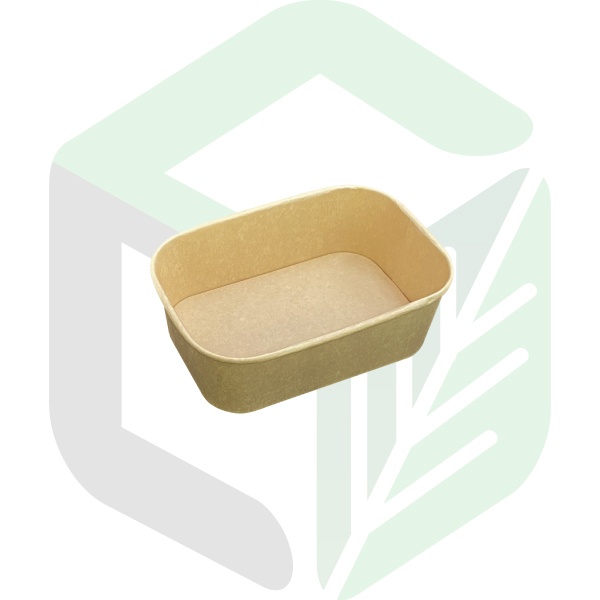 |  | 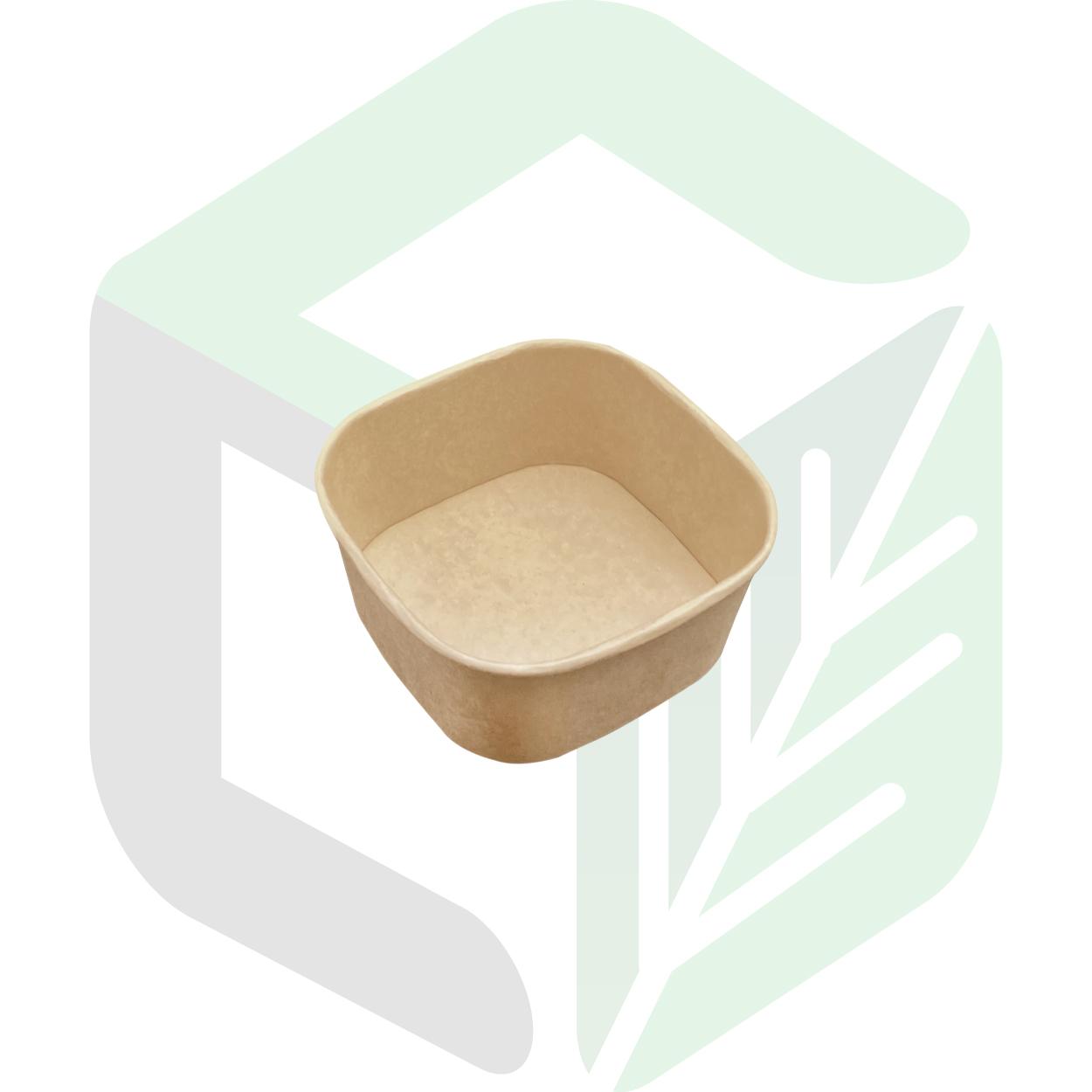 | 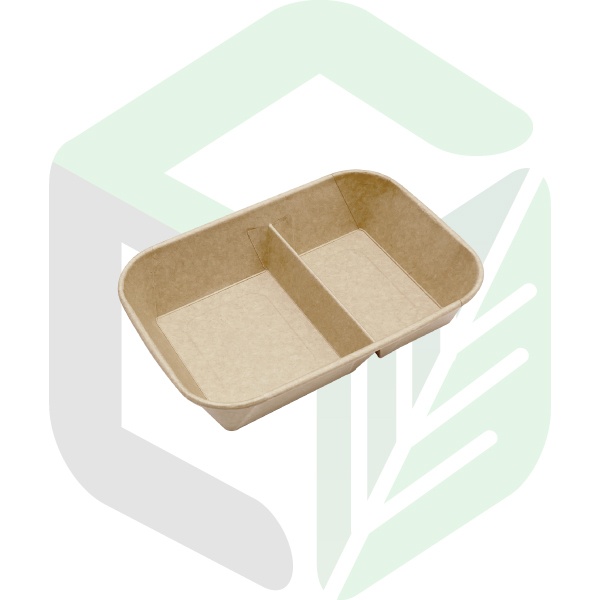 |
| Kraft Paper Rectangular Boxes 750mL _ 24oz | Kraft Paper Round Boxes Φ16.5cm 750ml _ 24oz | Kraft Paper Square Boxes 750mL _ 24oz | Kraft Paper Rectangular Boxes 1050ml_35oz_2 Compartments |
Final thoughts
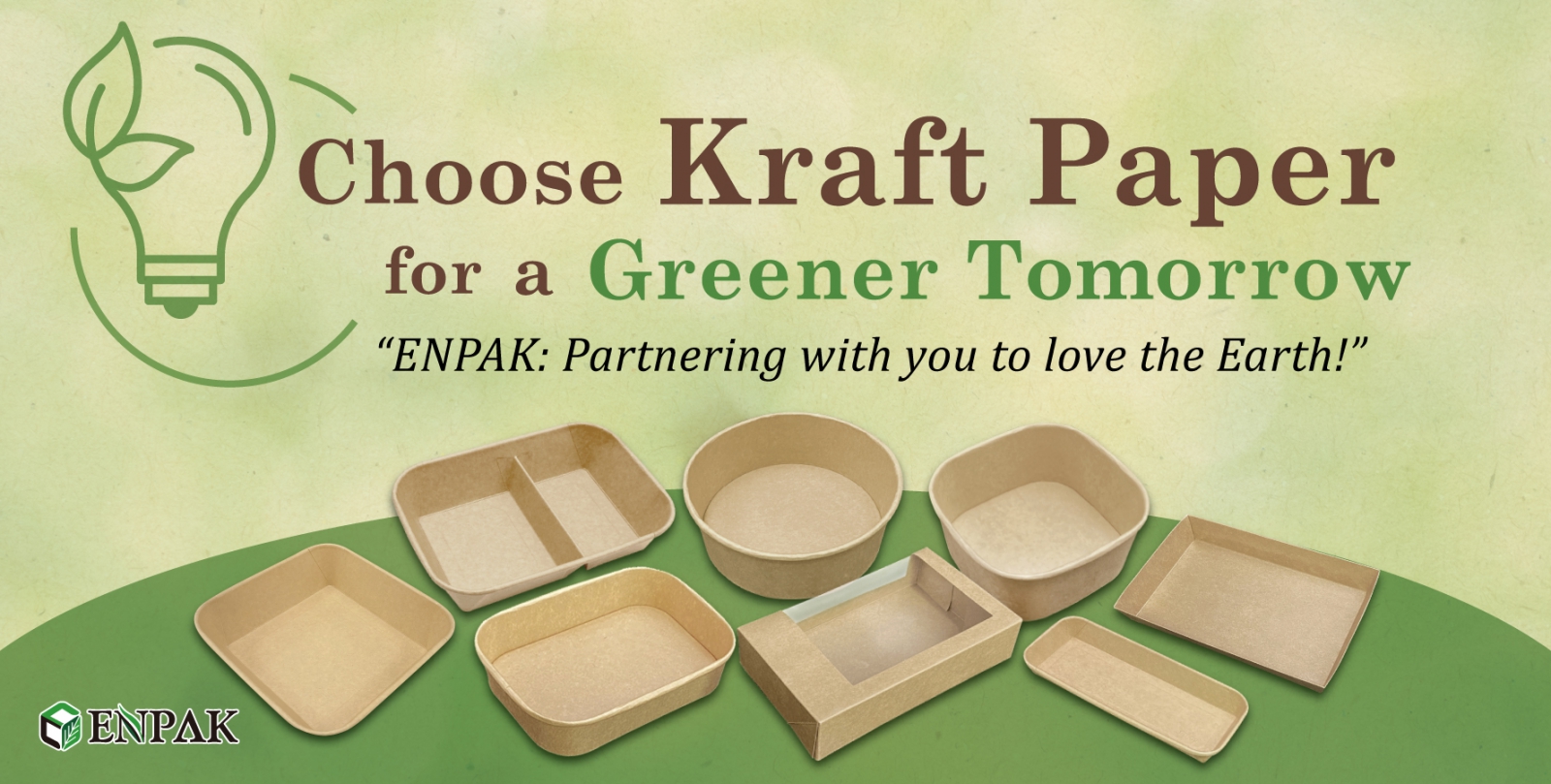
For F&B businesses seeking to enhance product presentation while prioritizing sustainability, kraft paper food packaging stands out as an optimal solution. Its robustness, cost-effectiveness, and natural aesthetics make it adaptable and functional for a wide range of food packaging needs. Kraft paper packaging offers dependable and long-lasting food containers, thanks to its high tensile strength, excellent grease resistance, and moisture-repelling qualities.
As an economical and eco-friendly option, kraft paper is a renewable resource with recyclable qualities, helping to minimize ecological impact and resonate with the increasing population of environmentally aware consumers. Its earthy appearance bolsters brand identity and contributes to a distinctive dining experience. By adopting kraft paper packaging, F&B businesses can present a wide array of cuisines with both sophistication and sustainability, aligning with contemporary F&B trends and meeting the expectations of growing eco-conscious clientele.
If your business in the F&B industry is looking for a more sustainable takeaway option, ENPAK offers an extensive range of kraft paper products, including eco-friendly disposable cups, bowls, and takeaway boxes. For more information on our sustainable food packaging solutions, contact our team to inquire more!
